I am given a half Nyquist plot and exercise as below


I know how to plot a Nyquist curve for a given transfer function but I have trouble doing it the other way.
I stumbled upon this post Deriving transfer function from nyquist plot and it seems intuitive to split the function in real and imaginary parts, write down special points of interest and create a equation system of some sort to calculate n, m and bring a, b and k into relation with eachother and name a combination of the three that makes \$ L(s) \$ match the given plot.
I don’t know if \$ L(s) = G_1(s) \cdot G_2(s) \$ is supposed to be stable in this exercise, but it is given that \$ G_2(s) \$ is BIBO stable. Assumed that \$ L(s) \$ is meant to be stable, we can observe that theres 3π circulations around the critical point \$ (-1/0) \$ and according to the Nyquist criterium \$ L(s) \$ must have one pole on the imaginary axis and one pole in the left open plane. But somehow, according top the post linked above, \$ L(s) \$ needs to be of order 3, so we have two poles(?) / a double pole(?) instead of a single one in the left open plane.
Points of interest:
\$ L(s) \$ will be of 3rd order (with a pole at \$ s=0 \$).
\$ L(s) = \frac{k}{s(s²+as+b)} \$
\$ Im[L(w=0)] = -infinite \$
\$ Im[L(w=wi)] = 0 \$ and \$ R[L(w=wi)] = -10 \$
\$ R[L(w=infinite)] = Im[L(w=infinite)] = 0 \$
\$ L(s) \$ with \$ s = jw \$ split into real and imaginary part should look like this
By playing around in Wolfram Alpha I found \$ n=1, m=1, a=1, b=1, k=10 \$ looks similar to the given plot, but how is this exercise supposed to be solved?
